The Indian government will provide a 30% subsidy for hydrogen, green fuels and port digitalization
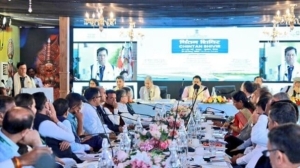

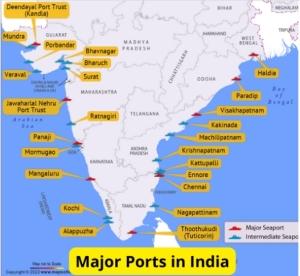
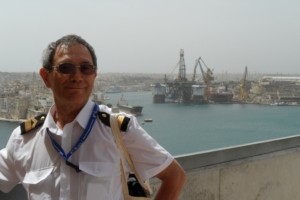 By Marek Grzybowski
By Marek Grzybowski
India is intensively transforming large and small ports into environmentally friendly logistics centers. The Indian government recently unveiled a number of initiatives to encourage the use of green technologies in ports. In 2024, the programs come into force with significant support from the Delhi government. This is a broader program for the development of Indian shipping announced by the Indian Ministry of Ports, Shipping & Waterways (MoPSW).
It is no secret that transport infrastructure based on ports and shipping will be supported directly by government funds. India has set itself short deadlines for implementing very ambitious development programs.
In the financial year 2022-23, major ports in India handled 795 million tonnes of cargo, implying a compound annual growth rate of 10% in the financial year 2021-22, Sudhansh Pant, Minister of Ports, Shipping and Waterways, informed The Economic Times.
12 major ports
This result was driven by the activity of 12 major ports: Deendayal (Kandla), Mumbai, Mormugao, New Mangalore, Cochin, Chennai, Ennore (Kamarajar), Tuticorin (VO Chidambaranar), Visakhapatnam, Paradip and Kolkata (including Haldia) and the Jawaharlal port Nehru.
Non-major ports accounted for 45% of the total cargo traffic at Indian ports in FY 2022-23 due to significant traffic shift from major ports to other ports. At that time, ports achieved 176.71 billion rupees in revenue, while 10 years earlier it was 92.67 billion rupees.
By 2035, a whole complex of facilities capable of bunkering and refueling ecological hydrogen is to be built in many ports. The aim is to minimize the carbon footprint in India’s logistics chains, the Ministry of Shipping said in guidelines issued over half a year ago.
– The Indian government will provide ports with a 30% subsidy for green investments. Given the rapid pace of expansion, the Indian government has projected a nearly 300 percent increase in transshipment capacity at sea and river ports by 2047, the shipping minister said at a press conference.
– The country’s total port capacity will increase from the current 2,600 MTPA (million tonnes per year) to over 10,000 MTPA in 2047. – said Sarbananda Sonowal, Minister for Ports, Shipping and Waterways (MoPSW) at the 19th meeting of the Maritime States Development Council in Kevadia, Gujarat.
Industrial India is one of the world’s largest emitters of greenhouse gases. The government has set a program to reduce their emissions to net zero by 2070, and the Minister of Shipping said that three of the selected ports will initially be equipped with facilities for bunkering ecological hydrogen and ammonia – Reuters reported.
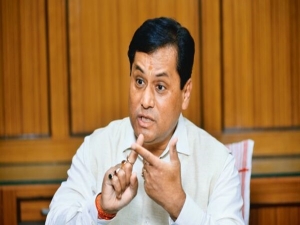
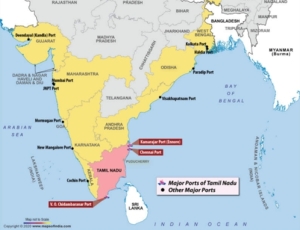
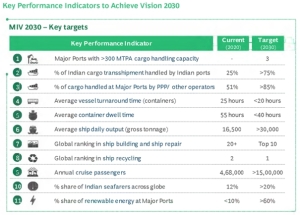
Hydrogen revolution in the seaports
– Our goal is to complete all 12 major bunkering installations with green hydrogen by 2035, Shipping Minister Sarbananda Sonowal told Reuters. The investments will be made first in the ports of Paradip in the east of the country, Kandla in the west and Tuticorin in the south.
In addition to 12 large ones, there are over 200 ports on India’s 7,500 km long coast. About 95% of India’s trade takes place through these ports, which is similar to that in Great Britain. By sea, goods and services constituting 65% of the trade value reach India or are exported through large and small ports.
The authorities want at least half of the equipment (vehicles and cranes) in major ports to be powered by electricity by 2030. In 2047, devices powered by combustion engines will constitute no more than 10%.
“Any initiative we take is aimed at achieving the 2070 goal of a net-zero carbon emissions country,” Sonowal told Reuters’ Nidhi Verma.
To achieve the net zero emissions target, at least 40% of India’s electricity will have to come from renewable sources, government forecasts assume.
– It was decided to finance [those investments – Ministry of Economy] that are necessary to transform these ports into ecological ports – emphasizes Sonowal.
Five initiatives in ports and shipping
Union Minister for Ports, Shipping and Waterways Shri Sarbananda Sonowal has listed five initiatives focusing on green shipping and port digitalization. He stressed that the country has a clear focus on promoting green shipping and increasing the efficiency of port operations. He said the new efforts would bring more sustainability to the maritime industry.
As part of the first of five initiatives, the government will increase the level of financial support for companies building ecological ships. As part of financial assistance for the shipbuilding industry, the government will provide 20 percent financing for newly built ships from 2024, reduced by three percent annually. For eco-friendly ships, the government will increase support to 30% of the total project cost. And it is supposed to be support for the domestic shipbuilding industry. European and Asian shipyards cannot count on Indian taxpayers’ rupees.
The Indian government believes that this level of subsidy will create an incentive for shipowners to use alternative fuels. Recently, the government also announced that ships for offshore wind energy will be added to the subsidy program. In the financial assistance program, a total of 21 shipyards are registered on the list of companies with shipbuilding permits.
Financial support is guaranteed for ecological ships built in the country. The program covers ships for the assembly of wind turbines, transport units, rescue ships for the SHP sector, service ships and others. The decisions are motivated by the fact that India wants to accelerate the development of domestic offshore wind energy. The Indian government assumes that the first projects will be completed by 2026.
Battery-powered hydrogen tugs
The government recently announced a program to transform the tug fleet. Its aim is to start introducing hybrid tugs from 2025. The government has stated that by 2030 at least half of all tugs are likely to be converted to green operations. This would contribute to achieving the Sustainable Development Goals by reducing greenhouse gas emissions in ports.
To further encourage the adoption of new technologies and provide a model for emerging technologies, MoPSW said it will provide financing and deliver two hydrogen-powered hybrid tugboats to each of the four government-owned ports. Hydrogen-powered tugboats will be provided to the port authorities of Jawaharlal Nehru, VO Chidambaranar, Paradip and Deendayal.
Port modernization is the focus of MoPSW. The minister stated that efficiency in ports has already improved significantly. Over the last eight years, 90% of Indian ports have completed renovation and modernization works under the modernization program.
Ports, seas and rivers in your computer
From 2024, Jawaharlal Nehru and VO Chidambaranar ports will become smart ports. A uniform IT system will be created to facilitate navigation and monitor ship cruises on rivers and sea areas.
Sonowal emphasized a clear focus on sustainable development and digitization of ports. He noted that each of the five new programs will contribute to more sustainable port development.
The priority is to develop green hydrogen hubs in Deendayal and VO Chidambaranar ports. This builds on a program announced on May 11 that plans to make green hydrogen-based fuels available in the country’s largest ports by 2035. It said 12 ports will have LNG capabilities by 2030 and green hydrogen/green ammonia bunkering capabilities will be added made available by 2035 .
Government representatives emphasized that “India believes that by implementing these programs, it can become a leader in the global maritime industry.” The minister said progress on each initiative would be reviewed mid-year. In case of any delays in project implementation, disciplinary actions will be taken.
India in the Logistics Performance Index
As a result of modernization investments and organizational innovations introduced in Indian ports, there was a significant reduction in the stay time of ship staff in Indian ports – the result of the latest data included in the Logistics Performance Index.
The time that ships spend in port for active loading or unloading in Indian ports comes to around three days compared to four days in countries like the United Arab Emirates and South Africa.
India performed well in another parameter measuring port operational efficiency. The country’s average turnaround time (TRT) of just 0.9 days is among the best in the world. In Belgium, Germany, the United Arab Emirates, Singapore, Malaysia, Ireland, Indonesia and New Zealand it is 1.4 days, in the USA 1.5 days – according to the Logistic Performance Index (LPI) Report 2023.
In India, thanks to investments in infrastructure and superstructure, transshipment of 12 main ports of the Indian subcontinent increased from 871 million tons in 2015-2016 to 795 million tons of cargo in 2022-2023. The global throughput of Indian ports increased from approximately 1,560 million tons in 2015 to over 2,600 million tons last year. By 2047, it is expected to reach 10,000 million tonnes.
Source: https://www.insightsonindia.com; Ports Infrastructure of India; Logistics Performance Index 2023; https://economictimes.indiatimes.com
